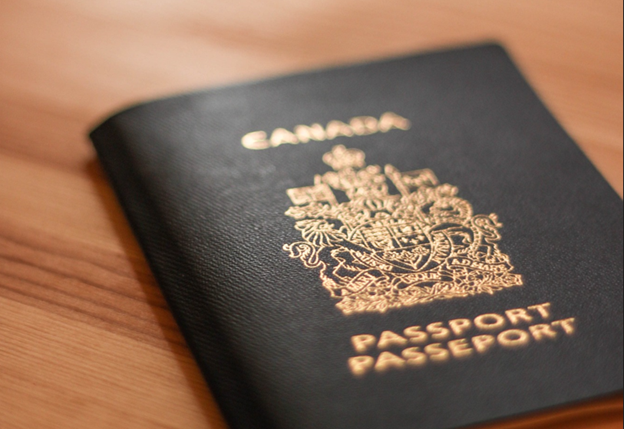By: Andrew Carvajal | Partner & Lawyer – Desloges Law Group; Chief Academic Officer – LPEN

Starting this week, immigration authorities at the federal level and provincial level will begin the implementation of the new version of the National Occupational Classification (NOC) 2021. So for those who are looking to get a summarized version of the changes to the NOC and the impact on several immigration programs, we have provided it below.
The NOC 2021 is a major revision of Canada’s occupational classification system. It involves adding, merging, and splitting several of the previous occupational unit groups. Additionally, there is a completely new five-digit codification system that brings an additional level of detail to the classification.
Occupational unit groups under the NOC 2021 have also been recategorized across 10 Broad Occupational Categories and the new Training, Education, Experience and Responsibilities (TEER) categories. Therefore, the TEER system replaces the previous four-category skill type/level system. It introduces a whole new six-category system representing the different requirements for entry into an occupation. So, it is important to note these changes, as they will affect a number of future immigration applications, including active Express Entry profiles.
Reconfirming Eligibility with the New NOC 2021
With this new TEER system, immigration applicants will have to reconfirm their eligibility under some of Canada’s programs for permanent residence. The NOC 2021 has upgraded 18 occupations that were previously categorized as semi-skilled occupations and are now reclassified as skilled. This will impact federal applications under skilled labour programs, including the Federal Skilled Worker Program, the Federal Skilled Trades Program and the Canadian Experience Class. Similarly, provincial and territorial programs requiring skilled work experience and/or a skilled job offer, will be affected by these recategorizations.
Yet at least 3 occupations have faced elimination from the categorization of skilled work. Therefore, this means that they are no longer eligible for any skilled labour program mentioned above.
12 occupations faced a shift from the mid-tier range (Skill Level C) to the lowest category ranking, TEER category five. Unfortunately, that change will impact their eligibility under some programs, such as the Atlantic Immigration Program.
How the New Numbering and TEER System Will Work with NOC 2021
With the introduction of the TEER system, the previous hierarchical framework and categorization system for Canadian occupations has changed. Whereas it previously involved Skill Type 0 and Skill Levels A, B, C, and D, it is now TEER categories 0 through 5. Therefore, this effectively adds a new tiering level and splits the old Skill Level B into two categories. You can identify the TEER of an occupation by looking at the second digit of the unit group code.
| Skill Type 0 | TEER 0 |
| Skill level A | TEER 1 |
| Skill level B | TEER 2 and TEER 3 |
| Skill Level C | TEER 4 |
| Skill Level D | TEER 5 |
These new six categories define the type of training, education, and experience needed to be fully competent to perform the duties under a particular occupational unit group.
Occupations will also continue to be classified across 10 Broad Occupational Categories. These can be easily identified within the new five-digit codification by looking at the first digit of the NOC code. Moreover, these broad categories are what classify the industry of an occupation, the type of work performed, and the field of study to be eligible.
Management Occupations
The NOC 2016 included all managerial occupations under the Broad Occupational Category 0. However, under the NOC 2021, Broad Occupational Category 0 only includes legislators and senior management occupations. Meanwhile, any occupation with a 0 in the second digit of the unit group code will be recognized as being managerial under the new TEER system. Subsequently, this change will have no significant impact in future immigration applications.
Senior managerial/executive occupations will continue to have NOC codes that start with 00. This is reserved for executive-level types of positions, or in the case of multinational corporations, it can also be inclusive of senior management positions.
Professional Occupations
These types of positions normally require the eligible candidate to have, at the bare minimum, a university degree. Also, the term professional often has use and application within the context of Free Trade Agreement work permits. Whether an occupation is “professional” or “technical” also impacts the minimum English/French level required under the Canadian Experience Class.
Under the new TEER system, you identify a professional occupation with a 0 or 1 in the second digit of the unit group code. However, this change has a minimal impact on the previous categorization.
Skilled Occupations
Here is where the changes of the new categorization under the NOC 2021 will impact the most. Three-unit groups have been demoted from being considered skilled occupations, while 18 unit groups have been promoted to skilled work. So, skilled occupations or job offers will be identified with a 0, 1, 2 or 3 in the second digit (TEER) of the unit group code.
Semi-Skilled Occupations
In addition to some semi-skilled occupations now being considered skilled under the NOC 2021 (and vice-versa), other unit groups are being impacted because of a demotion from a prior Skill Level C to the new TEER 5. Therefore, those occupations with demotions will no longer have the chance to apply to some Economic Class programs, such as the Atlantic Immigration Program.
Semi-skilled occupations or job offers will be identified with a 4 or 5 in the second digit (TEER) of the unit group code.
See the full list of the occupations that won and lost with the transition to the NOC 2021 here.
What to Do Next in Regards to NOC 2021
Check out the NOC Correspondence Table to see how an occupation classified under the NOC 2016 is now classified under the NOC 2021.
Ther is a lot to cover with these changes. Including how the NOC 2021 works, the new 5-digit format, as well as the practical implications of these changes to LMIA, work permit and permanent residence applications. So, if you want to learn more about this subject, register for LPEN’s New NOC 2021 course.





